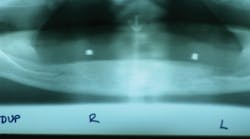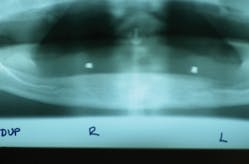Building a great practice means building a great business
by Ken Runkle
For more on this topic, go to www.dentaleconomics.com and search using the following key words: business, profits, dental team, leadership, production, collections, Ken Runkle.
If you own a dental practice, you own a business. There is a profit and loss statement. There is a bottom line. Money comes in and goes out. People get paid and people spend.
My mission during the last 24 years of in-office dental-management consulting has been to help doctors build great dental businesses. It is not uncommon to find a gifted dentist who is a poor business owner and as a result, has a failing practice.
On the other hand, I have had the privilege of helping many doctors through the years add business excellence to their existing clinical expertise, creating a powerful practice dynamic that results in exceptional dentistry and maximum profits.
As a broad overview of the business of dentistry, I’d like to cover three overarching, yet essential, themes to achieve a successful dental business:
- Leadership
- Team
- Profit
Leading your business
There is a difference between a business owner and a business leader. Business leaders lead successful businesses. If you want to run a great dental business, you must start on the path to becoming a great leader. The good news is that leadership can be learned and developed over time. The four critical areas of leadership listed below provide the fuel and the rudder for your business:
1. Vision – The primary role of the leader of a dental business is to set the vision. Put simply, you decide where the business is going. Without a vision, you and your team will wander aimlessly. Where is your business heading?
2. Goals – Successful business leaders establish clear short-term and long-term goals based on detailed and incremental plans to achieve those goals. Without clear goals, progress and success cannot be measured. What are your goals?
3. Expectations – Once the vision is clear and the goals are set, effective business leaders consistently and continuously communicate their expectations to every person at every level of the business. From greeting patients to case presentation and acceptance, to treatment, you cannot expect your team to meet expectations they do not understand or are unaware of. What are your expectations?
4. Growth – If you, as the business leader, are not continually growing, learning, and developing, you will eventually limit the growth of your business. The concept of constant and never-ending improvement drives every dental business leader who wants to be successful. Are you growing?
Building a great business team
People power your business. Successful business leaders recruit, train, and lead productive, principled, and passionate teams. In consulting with some of the top dental practices in the country, we discovered seven team-related strategies consistently apply to building thriving dental businesses:
1. Establish written standards – A professionally written human resource manual is no longer optional. Without a manual covering all essentials related to employee issues, your practice is at risk. With a manual, standards are clear and established.
2. Communicate clear expectations – It is not enough to let your staff know that you want "excellence" or "professionalism" or "good customer service." You must communicate in detail exactly what it looks like to meet your expectations. And, you must repeat your clear expectations over and over again on a consistent basis, even after they are fully implemented.
3. Provide a taste of the experience you want to create – Effective communication is often best accomplished in the context of experience. As many times as you may have been told as a child to finish your dinner because there were starving kids in Africa, it probably never really settled in unless and until you tasted and smelled starvation in person. You can waste hours talking about creating a special patient experience, but one trip to a five-star hotel, restaurant, or resort will move your staff quickly from head knowledge to complete understanding.
4. Insist life issues do not impact performance – Every person on your staff brings life issues into their practice role. Whether it’s a family issue, financial issue, or other personal problem, personal problems exist in your practice. It is your responsibility, as the leader of the staff, to clearly communicate with your staff that although they may be dealing with difficult personal issues, their situation cannot affect their attitude, patient focus, performance, or productivity. They must learn to park their problems at the door and not let them crowd over into the practice.
5. Establish team leaders – Most successful dental businesses establish team leaders as they near $1 million in revenue. It’s your job to lead your staff, but you may want or need to train and appoint department leaders to get more out of each area of your dental business.
6. Recruit and employ team players – It is critical to your short-term and long-term success to recruit and retain only those who are fully on board with the vision of the practice. Everyone must be a team player. A team player can be defined as a staff member who understands and fully embraces the vision, seeks to always meet the high standards and expectations of the practice, and views his or her role as more of a mission than a job.
7. Resolve conflicts immediately – If you have conflict, big or small, within your staff, you must act quickly to resolve it immediately. Every moment you wait, bitterness grows and shows. If staff members cannot resolve their conflicts and move beyond them, you may need to find new employees. Conflict within staff is often palpable to patients, creating an environment of hostility and tension. Your message to employees must be direct and unequivocal: "Resolve it now or find a new place to work."
Maximizing profit opportunities
Successful businesses produce a profit. The beauty of the dental business is you have the honor and privilege of helping and serving patients while earning a profit. In fact, the more effective help you provide, the more your profits increase.
What follows is a discussion of some principles that we have discovered for maximizing profit opportunities. These principles have proven effective in every dental practice we have worked with, regardless of region or specialty.
1. New business – Successful dental business leaders aggressively seek out multiple ways to consistently drive new patients to their practices. Realizing that one home-run approach is insufficient, they seek to hit many singles in an effort to create the maximum flow of new patients.
Using multiple marketing tools in the dental marketplace, new patients arrive through strategic direct mail, a prevailing Web presence, local awareness public relations, engaging signage, and other creative approaches. Systematic tracking and evaluation of each avenue ensures that the business is becoming more effective over time in the quest to reach new patients.
However effective external marketing practices may be, thriving dental business leaders tend to rely most heavily on internal marketing. Systematic referral plans and policies drive the baseline traffic to meet new patient goals.
2. Systems – Generating new business without proven systems in place to respond to new patients is counterproductive. If a new patient is seen within one week of his or her initial contact, new patient numbers tend to increase by as much as 50%. Systematically blocking time every week for new patients is an important business strategy.
Systems are also critical for everything that happens in the practice. Therefore, every system must be audited regularly to ensure it is effective and remains true to established expectations. Details drive the bottom line. Everything from how to answer the phone to how to say goodbye to a patient becomes part of the system, and every team member is fully acquainted with the process. Good systems create a well-oiled machine, and a well-oiled machine consistently produces profits.
3. Important numbers:
(a) Expenses – There are four main expenses in a dental business. As the CEO, owner, and leader of the business, it is essential that you not only know these numbers at all times, but also keep them in line with the following standards:
Staff expenses should be no more than 20% to 25% of your total expenses. Elevating per staff production will keep your percentages down in this area.
Lab costs should be kept to 10%. Shop around and remember to charge patients about five times your lab cost.
Supply expenses must remain at no more than 5% of total expenses. Again, shop around to maintain quality at a good price.
Facility expenses should not exceed 5% unless they can be considered part of your marketing plan. But the operative principle is to keep it near 5% to keep your entire expense ledger within the parameters necessary to keep your overhead at 50% overall.
(b) Fees – If your practice fees are not currently in the 80th percentile of dental fees based on yearly reports, your overhead is probably way too high. The higher your fees, the lower your percentage of overhead will be relative to your fees, and the greater your profits will be. There are several good resources in the dental community to use as measurements for where your fees currently rank. Note: If you are a specialist, your practice fees should be in the 90th percentile.
4. Production –The more you produce, the more expense percentages fall and profits rise.
Let’s look at a quick example. One dentist has a staff consisting of two front-office assistants, two dental assistants, and two dental hygienists. The practice produces $600,000 of dentistry a year. His staff expenses, as a percentage of his net production, are more difficult to keep in check than our second dentist’s.
Dentist number two has the same staffing configuration, but produces $1.2 million a year. On a percentage basis, his staff expenses are much easier to keep in check.
Dentist number three is an overachiever and produces $2 million a year with the same staffing configuration. Not only does she have the lowest staff expense percentage of the three dentists, but she also has by far the highest paid staff members and the greatest overall profit.
5. Collections – We ask each dental business we serve to always set its monthly collection goal at 100% of all production, net-to-net. The more you collect, the more your percentage of overhead is reduced. If you produce $112,000 a month, but only collect $80,000 and your overhead is $55,000, your percentage of overhead to production is about 69%. That is way too high!
If in that same example you collect $110,000 and your overhead remains the same, your percentage of overhead drops to 50% and the money in your pocket goes from $25,000 to $55,000 a month. It’s not magic – simply collect what you produce!
Building a great practice means building a great business. It starts with you as a business leader, multiplies through your team, and results in significant opportunities for excellent dentistry and maximum profit.
Go for it!
Known as America’s Profitability Expert™, Ken Runkle is the founder and president of Paragon Management, and has been helping dental practices reach peak profitability for 24 years. Reach Runkle by e-mail at [email protected].
Past DE Issues







